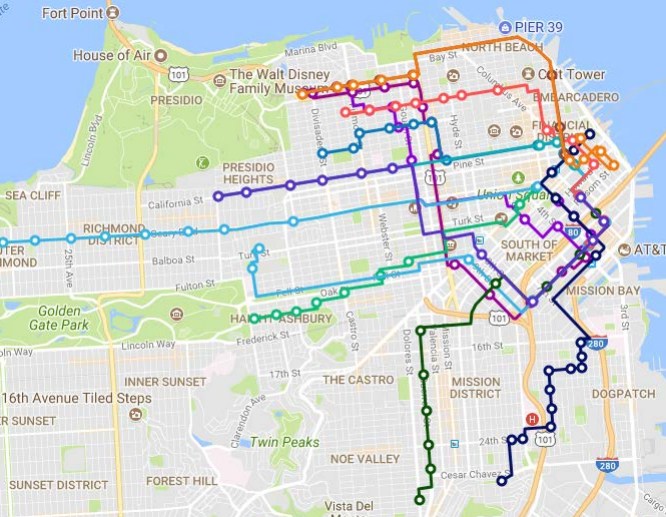Chariot is closing down. Does this bode badly for other forms of 'disruptive' transport, such as Uber, Lyft, scooters, bike-share?
That was the implication of yesterday's "Ford Axes its Chariot Shuttles, Proves Mobility is Hard," a feature in Wired magazine.
From the article:
When Chariot launched in 2014, it joined a wave of Uber-inspired "microtransit" tech companies hoping to disrupt transportation services by providing faster, more efficient options for riders sick of—and underserved by—traditional public transit.
Less than half a decade on, most have gone the way of the Hawaiian tree snail.
This was already the talk around the electronic campfire with the editors of Streetsblog. Upon hearing the news that Chariot was officially kaput, Streetsblog LA's editor Joe Linton remarked "But, but, but... Micro-Transit is the next big thing!!!!?!??!!!!! (sarcasm)"
NelsonNygaard's Terra Curtis warns against shadenfreude. "I think we miss an opportunity if we simply conclude 'transportation is hard--I told you so.' There are ways public and private can work together to improve upon the status quo, and there is significant room for improvement on both sides of that table."
But perhaps any enjoyment of the failure is about the "distrupters" themselves, who often describe what they're doing as revolutionary and "new" while dismissing the hard, detailed work of urban planning and mass transit. In reality, Chariot was no more than a jitney--a very, very old idea. Uber is just an unregulated taxi service. Kick scooters have been around for a long time too.
As to Elon Musk's supposedly "new" ideas for hyperloop or small subway tunnels for cars--well, that's all starting to seem like self-parody.
Maybe the key is for cities to ignore the silly stuff, fight offerings that run counter to the goals of sustainable transportation, and work with companies that offer products and services that are compatible with livable, walkable cities. "Government is best at managing transportation for the public good, and transportation tech firms can offer better customer service and an ability to test, learn, and adjust to find efficiencies. By continuing to work through the mess of partnering, we have an opportunity to elevate public transit, sustain private business, and serve all with a higher quality experience," said Curtis.
So which companies are going to survive in the long run? Uber and Lyft are still not profitable. When the venture capitalists start demanding returns, will TNC's shrink and disappear as quickly as they rose? Scooters are everywhere today; but so were in-line skates and hula hoops, once.
Fads and sea changes are notoriously hard to distinguish. On Streetsblog's Facebook page, under the announcement about Chariot shutting down, Nick Mason of San Francisco quipped that "scooters are next." And Pete Bigelow of Michigan wrote that "Chariot has been a mess. I still suspect the business model can work."
Who's right?
Where do you stand? What transportation "disrupters" will still be here in ten years? In twenty? Do you see traditional transportation and "new" transport options as competitive, complimentary, or some combination of the two? Leave your thoughts below.






